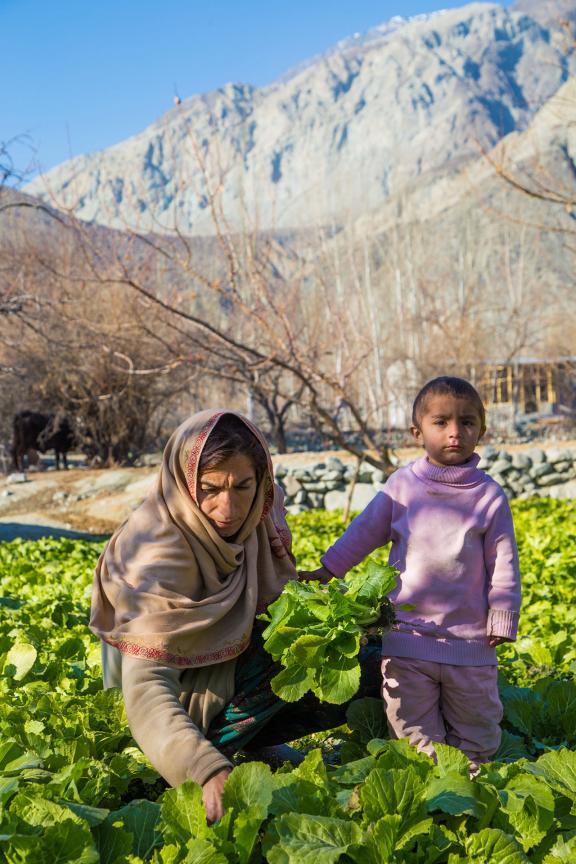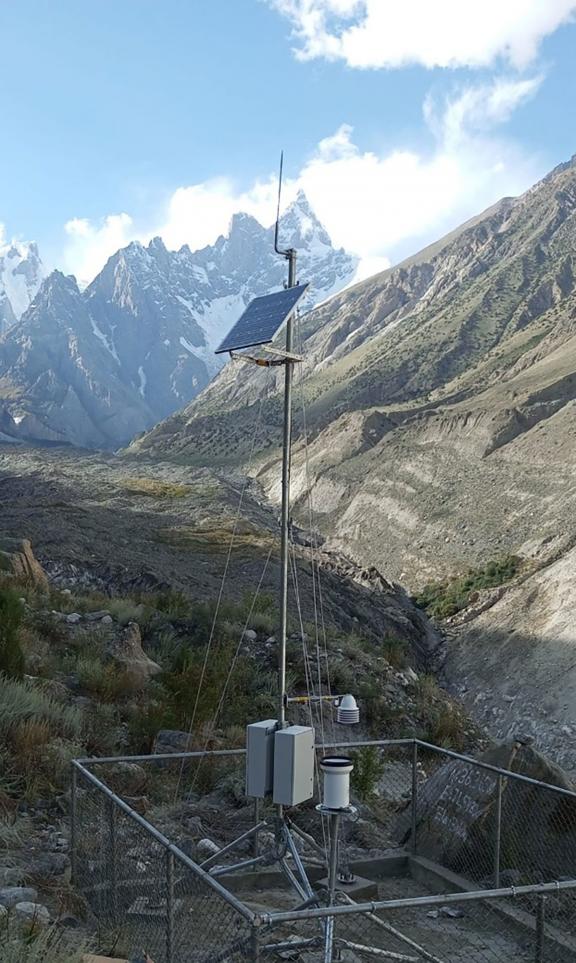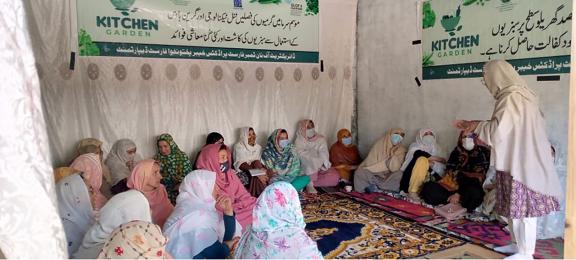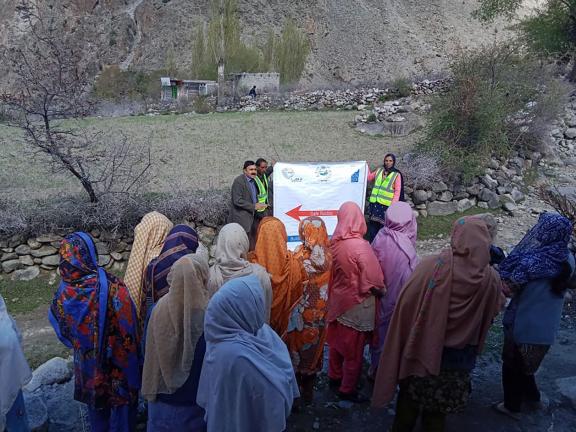Climate crisis in the Himalayas: addressing the threat of melting glaciers in Northern Pakistan
In the majestic landscapes of Northern Pakistan, a silent catastrophe is unfolding. Rising temperatures have taken a toll on the Hindu Kush, Karakoram, and Himalayan glaciers, causing them to melt at an alarming rate. As a result, glacial lakes have emerged, shimmering like jewels amidst the rugged terrain.
Risks and recognition
These glacial lakes pose a significant risk of flooding events, capable of unleashing devastation upon the land and its people. Over seven million people live in the shadow of an impending disaster.

The impacts of climate change place an additional stress on already vulnerable communities, with women and children disproportionately affected. Photo: UNDP
Recognising the urgency of the situation, the Government of Pakistan, with the United Nations Development Programme (UNDP) and the Green Climate Fund (GCF), is implementing a comprehensive project to mitigate the risks posed by these glacial lake outburst floods (GLOFs), helping communities preserve indigenous practices such as glacier grafting, avalanche harvesting, and ice stupas for water conservation in the valleys of the north. The goal is twofold: to safeguard local communities and provide early warnings of potentially catastrophic flood events.
A comprehensive plan of early warning systems
By the end of 2024, the Government of Pakistan aims to construct 250 engineering structures strategically placed throughout the affected regions. They include gabion walls, check dams, and irrigation channels, all designed to divert and manage the immense volumes of water that threaten to engulf both life and land. To date, the construction of 172 irrigation channels and 230 small-scale infrastructures are complete, which are benefitting up to 157,259 people, 51 per cent of which are women and girls.
In addition to the construction of hydraulic structures, the project is investing in the development of robust disaster management policies. To date, federal and provincial institutions have been supported, including communities in 24 of the most vulnerable valleys in Northern Pakistan. They will now establish a framework for effective response and coordination in times of crisis.

An automatic rain gauge (as part of an early warning system) in Shisper, Pakistan. Early warning systems comprise advanced automatic weather stations, rain gauges, snow depth sensors, water depth gauges, water discharge gauges, and warning posts. These systems enhance the climate resilience of communities by enabling timely response to disasters such as glacial lake outburst floods. Photo: Pakistan Meteorological Department/Abdur Rahman
Meanwhile, weather monitoring stations will vigilantly monitor the ever-changing climate, while flood gauges will provide crucial data on water levels. Hydrological modelling will allow experts to anticipate flood scenarios with greater accuracy. So far, two automatic weather stations and 14 gauges/sensors have been installed in Gilgit Baltistan, benefitting 13,687 people.
However, perhaps the most vital component of this comprehensive plan lies in the implementation of early warning systems. These systems will act as guardians by providing life saving time for evacuation and preparation. They will tirelessly monitor the glacial lakes and their surrounding environment and sound the alarm at the first sign of danger.
Community resilience
The effects of climate change on people’s livelihoods are tremendous. Through their collective efforts, the communities can turn the tide against nature's wrath. The lives and livelihoods of millions depend on their unwavering commitment and expertise.

Women learn about food preservation and kitchen gardening in Reshun Valley. The new skills will help secure their livelihoods and financially empower them, especially in the event of glacial lake outburst floods and other climate-induced disasters. Photo: UNDP/Muhammad Hussain

Mock drills have been conducted in the valleys of Ghizer, Astore, and Badswat, preparing more than 5,326 people, including 2,204 women, to respond in the event of disaster. Photo: UNDP
“Now that the installation of the early warning systems is underway in our valley, we feel far safer than before, as we do not have to migrate to other places in fear of a glacial lake outburst flood or any other climate disasters. We can stay on our land and adapt to nature. The warning mechanisms set in place will alert us before a disaster strikes, and we will be able to prepare and protect ourselves accordingly.”
A vision for the future
Set to conclude by 2025, the communities will be fully equipped to respond to GLOF events through the established early warning systems and disaster response mechanisms. The Pakistan Meteorological Department will take over the responsibility of operating and maintaining the early warning systems, while other relevant departments will appropriately handle other assets.
The Community-Based Disaster Risk Management Committees and Hazard Watch Groups are fostering ownership and a strong sense of responsibility, further strengthening the project’s impact and ensuring a comprehensive and sustainable climate action.
Finally, the project's initiatives will extend beyond the 24 valleys it currently operates in to tackle climate challenges and vulnerabilities exacerbated by global warming in the area, ensuring that no one is left behind.
By Jin Hee Dieu, in collaboration with UNDP